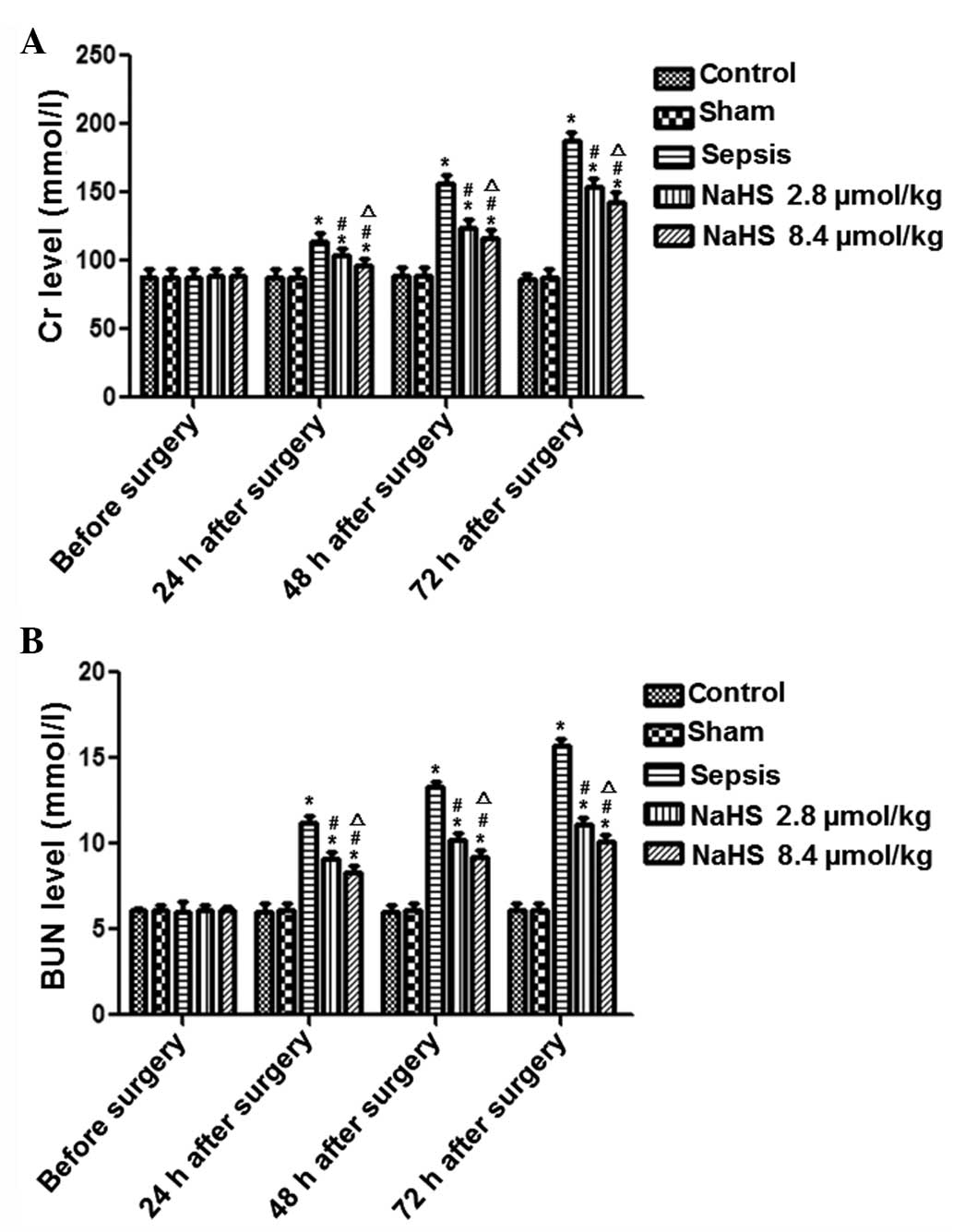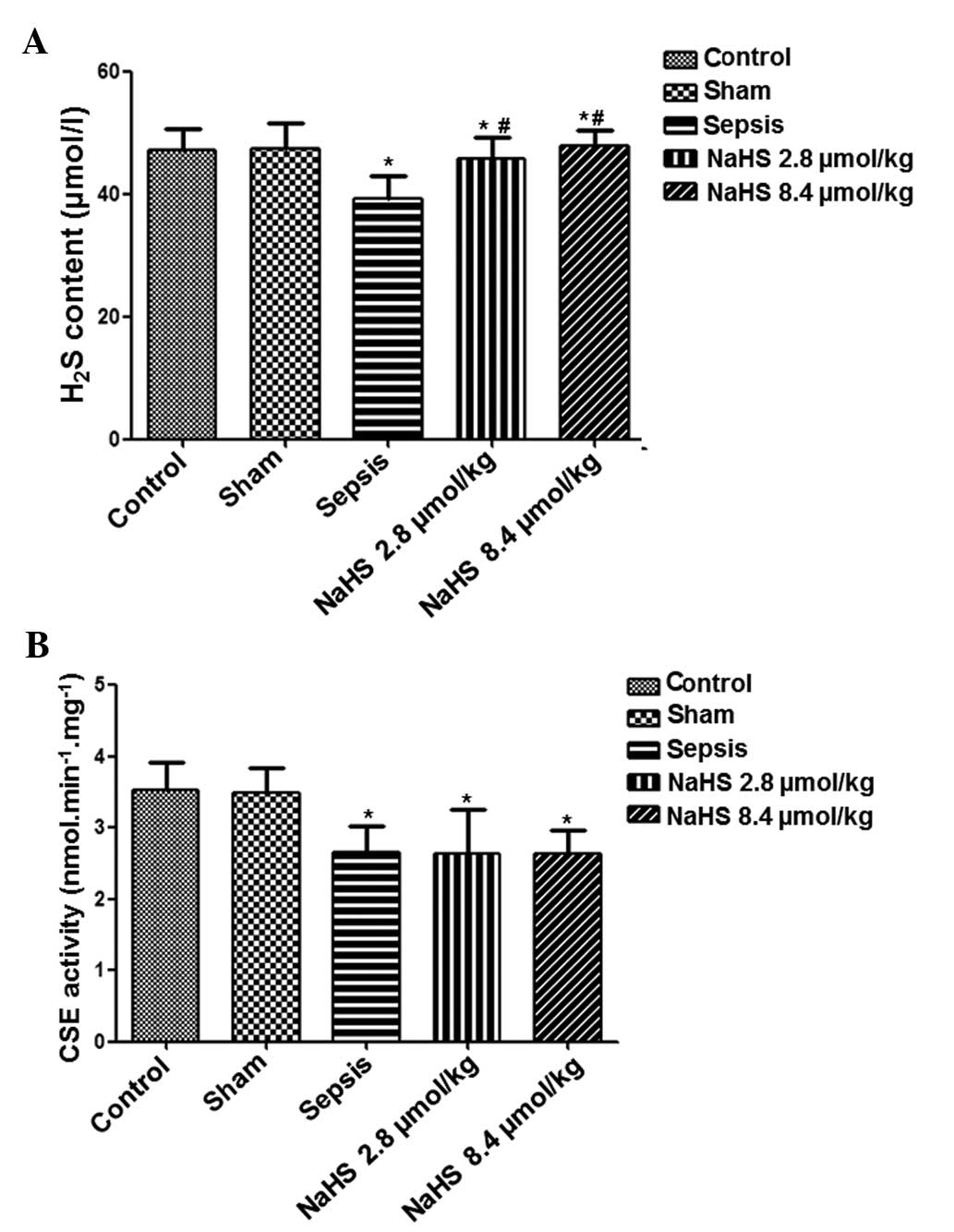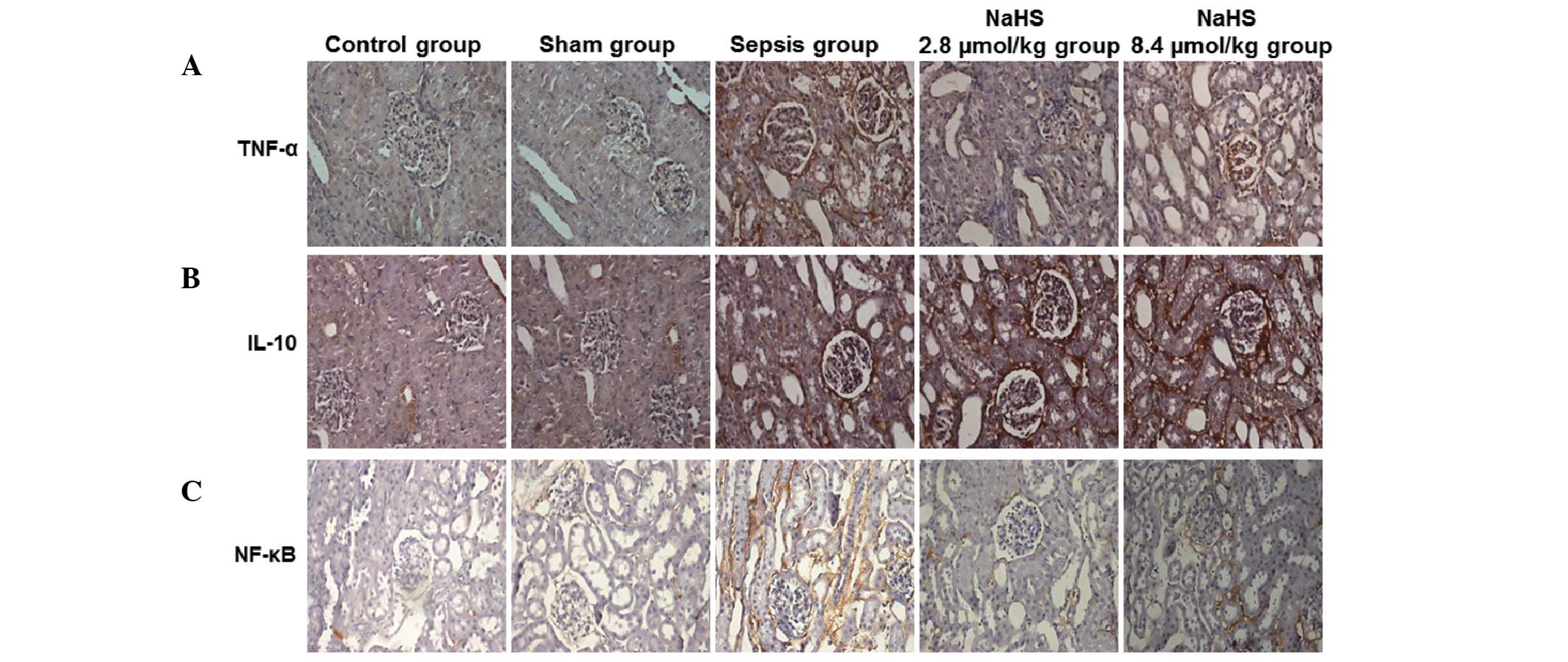Hydrogen sulfide reduces kidney injury due to urinary‑derived sepsis by inhibiting NF-κB expression, decreasing TNF-α levels and increasing IL-10 levels
- Authors:
- Published online on: June 12, 2014 https://doi.org/10.3892/etm.2014.1781
- Pages: 464-470
Metrics:
Total
Views: 0 (Spandidos Publications: | PMC Statistics:
)
Total PDF Downloads: 0 (Spandidos Publications: | PMC Statistics:
)
Abstract
The present study aimed to investigate the effect of hydrogen sulfide (H2S) on kidney injury induced by urinary‑derived sepsis. Rabbits were randomly divided into control, sham, sepsis, NaHS 2.8 µmol/kg and NaHS 8.4 µmol/kg groups, with six rabbits in each group. Upper urinary tract obstruction and acute infection was induced to establish the sepsis model. Blood was collected to carry out a white blood cell (WBC) count, and creatinine (Cr) and blood urea nitrogen (BUN) analysis. Morphological changes were observed by hematoxylin and eosin (H&E) staining and transmission electron microscopy. Immunohistochemical staining was used to detect the expression levels of tumor necrosis factor (TNF)‑α, interleukin (IL)‑10 and nuclear factor κ-light-chain-enhancer of activated B cells (NF‑κB). Cystathionine‑γ‑lyase (CSE) activity was measured by the spectrophotometric methylene blue method and the blood H2S concentration was measured by deproteinization. WBC, Cr and BUN levels were significantly elevated in the sepsis group compared with those in the control group (P<0.05). Following treatment with NaHS, the WBC, Cr and BUN levels were significantly decreased in the NaHS groups compared with those in the sepsis group (P<0.05). The pathological features of kidney injury were also alleviated by NaHS. In the sepsis group, the levels of TNF‑α, IL‑10 and NF‑κB were significantly increased compared with those in the control group (P<0.05). In the NaHS groups, the TNF‑α and NF‑κB levels were significantly reduced whereas the IL‑10 level was significantly increased compared with the respective levels in the sepsis group (P<0.05). The H2S concentration was significantly decreased in the sepsis group and this reduction was attenuated in the NaHS groups (P<0.05). Furthermore, the NaHS 8.4 µmol/kg dose revealed a more potent effect than the NaHS 2.8 µmol/kg dose. Thus, exogenous H2S reduced kidney injury from urinary‑derived sepsis by decreasing the levels of NF‑κB and TNF‑α, and increasing the level of IL‑10.














